Previous Day - Next Day
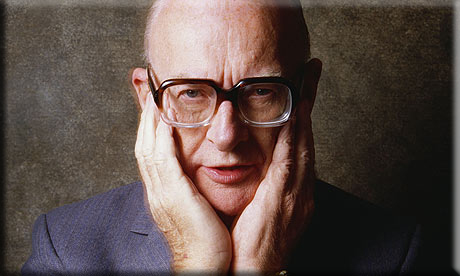
“There is a theory which states that if ever anybody discovers exactly what the Universe is for and why it is here, it will instantly disappear and be replaced by something even more bizarre and inexplicable. ... There is another theory which states that this has already happened.”
~ Arthur C. Clarke
Wikiquote (Arthur C. Clarke (December 16, 1917 – March 19, 2008) was a British author, inventor and futurist, famous for his short stories and novels, among them 2001: A Space Odyssey (1968), and as a host and commentator in the British television series Mysterious World. For many years, Robert A. Heinlein, Isaac Asimov, and Clarke were known as the “Big Three” of science fiction.)
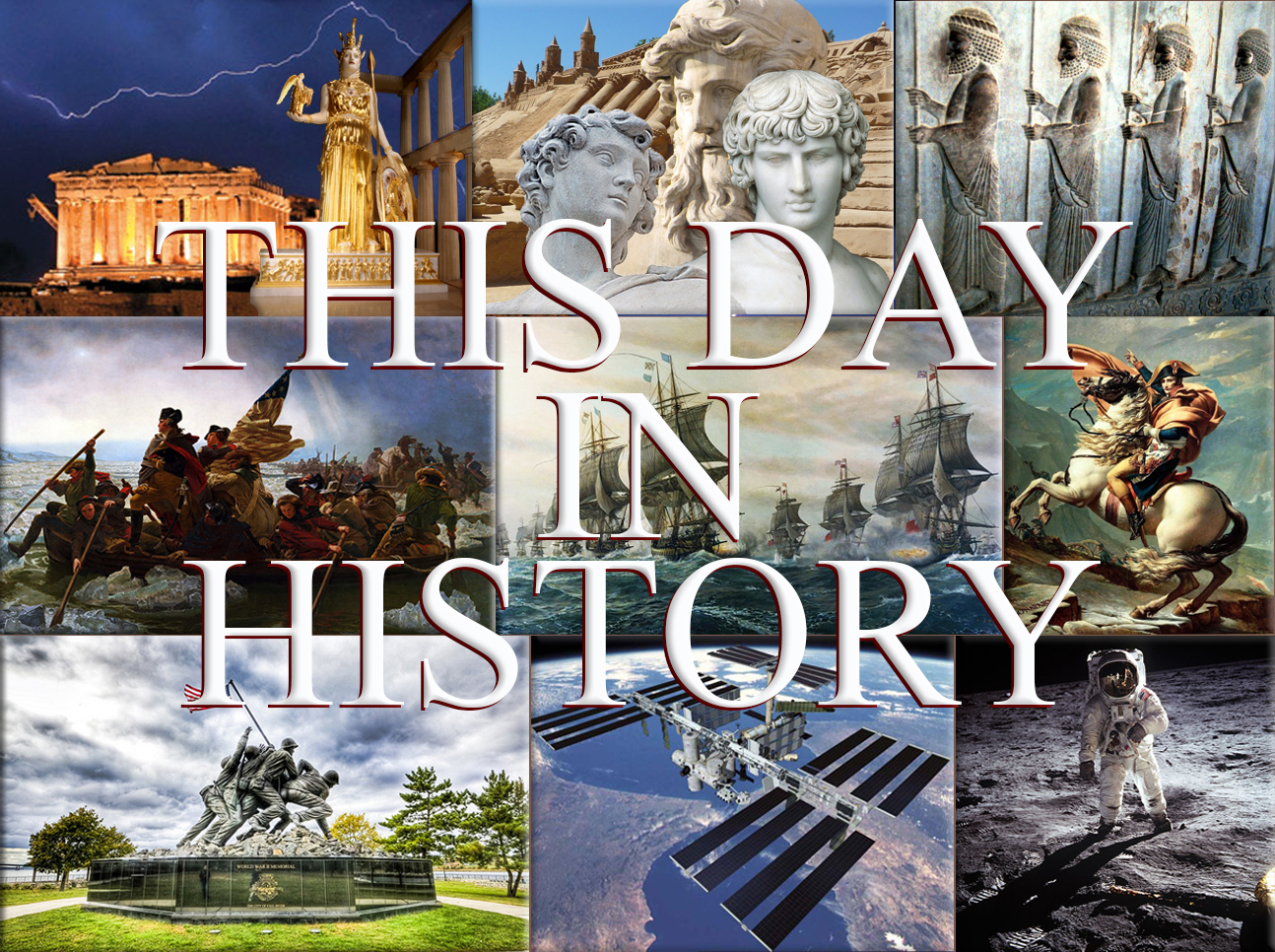
January 16th, 27 BC
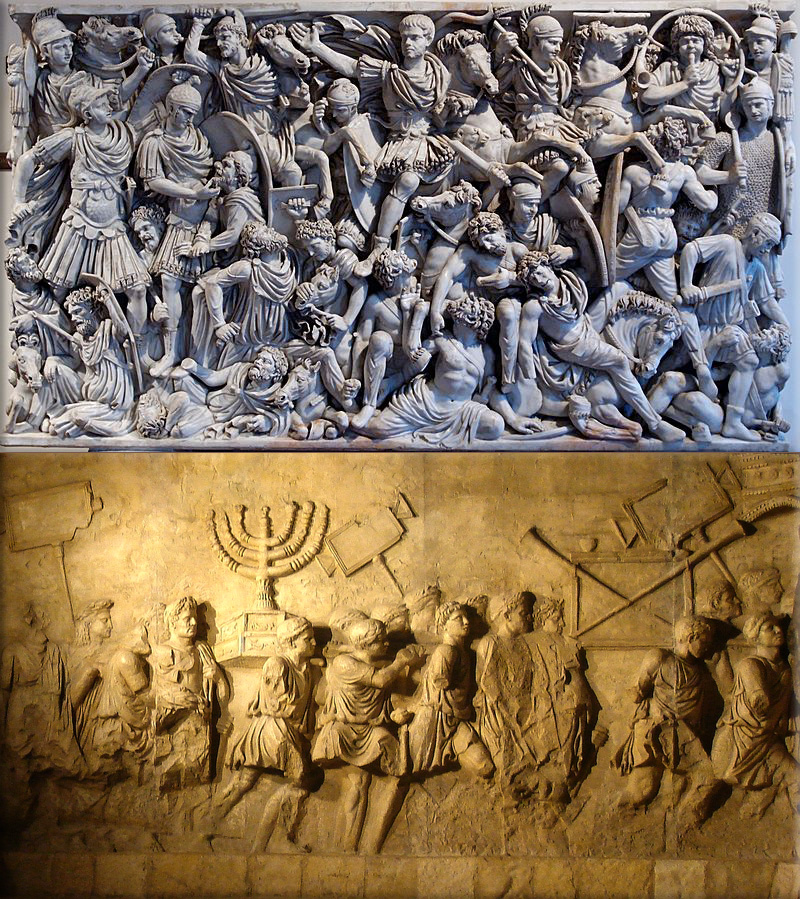
Roman Empire:
27 BC - Gaius Julius Caesar Octavianus is granted the title Augustus by the Roman Senate, marking the beginning of the Roman Empire.
550 - Gothic War (535–554); The Ostrogoths, under King Totila, conquer Rome after a long siege, by bribing the Isaurian garrison.
Wikipedia Image: Relief from a 3rd-century sarcophagus depicting a battle between Romans and Germanic warriors; the central figure is perhaps the emperor Hostilian / Depiction of the Menorah on the Arch of Titus in Rome.
January 16th, 378
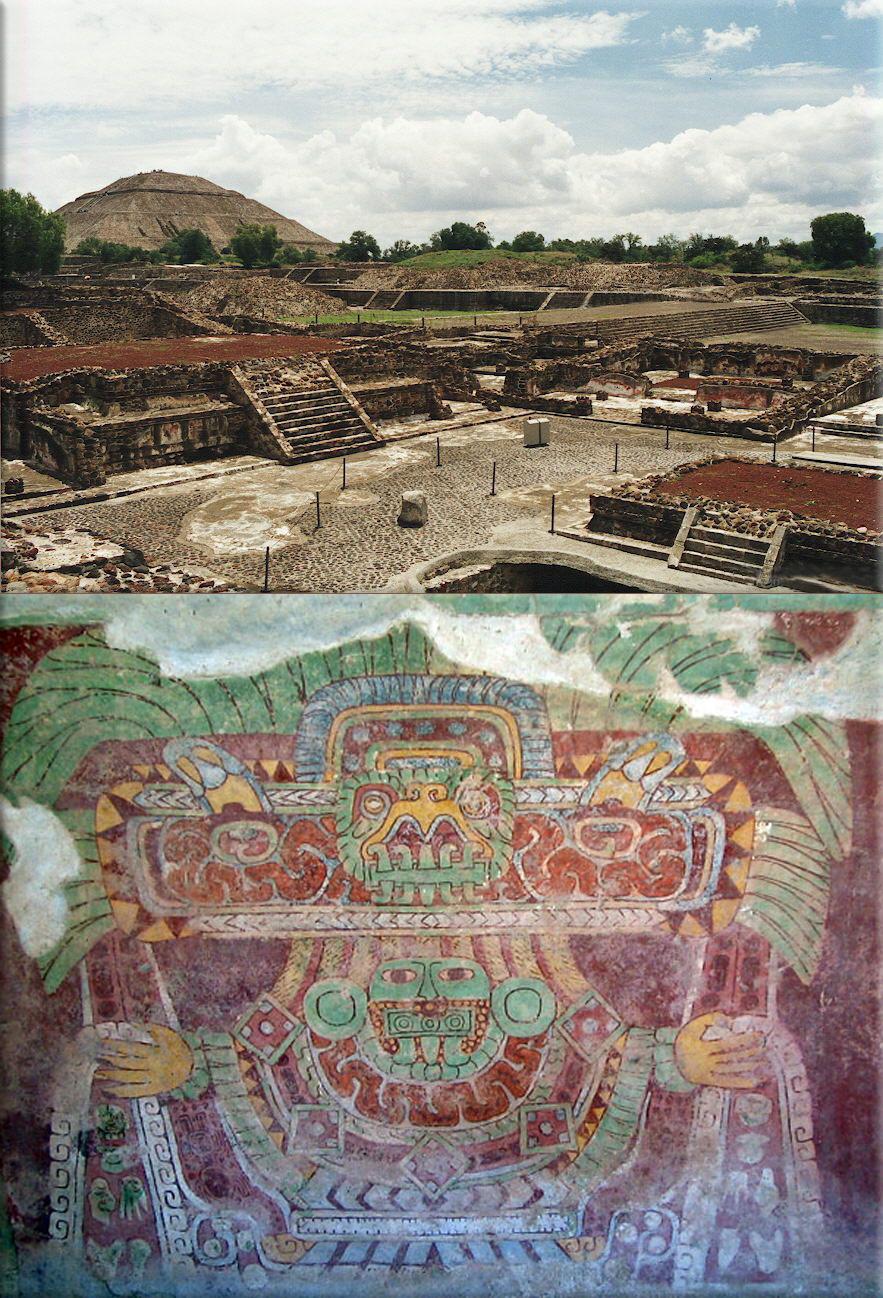
General Fire is Born (Siyaj K'ak') conquers Tikal, enlarging the domain of King Spearthrower Owl of Teotihuacán.
Wikipedia Photo: Teotihuacan – at one time the largest city in the world; Tetitla Teotihuacan Great Goddess mural (Abracapocus).
January 16th, 929
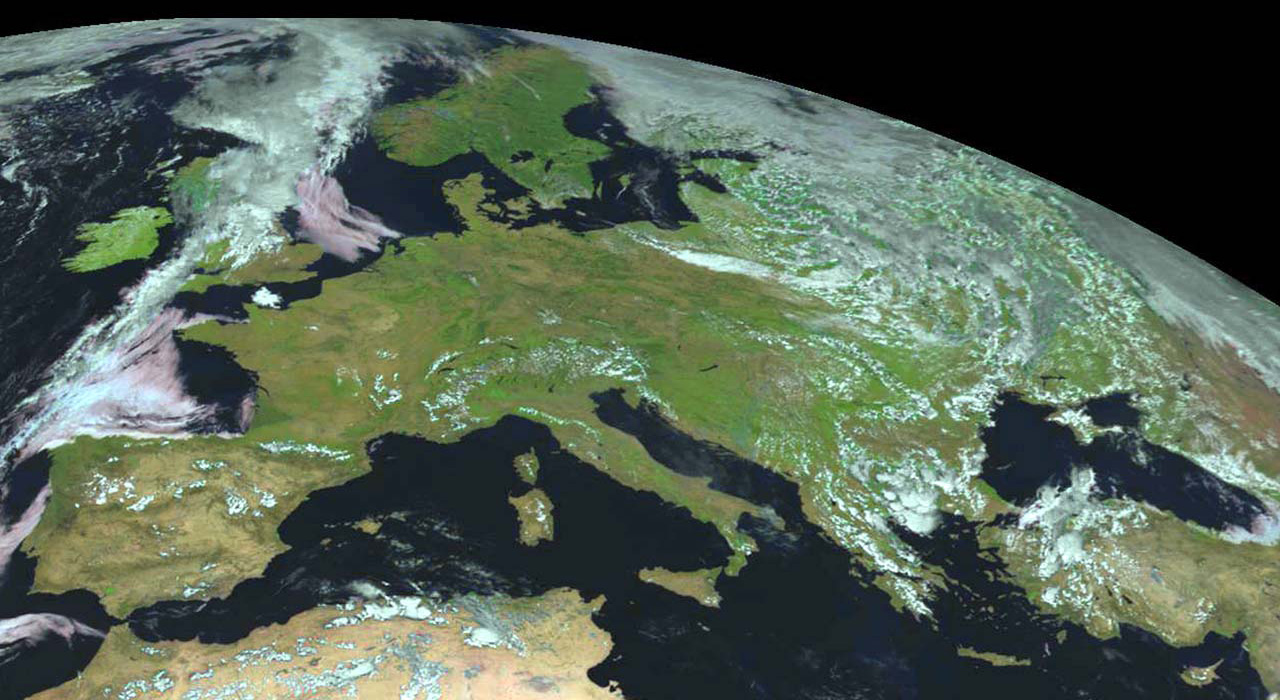
Emir Abd-ar-Rahman III established the Caliphate of Córdoba.
Wikipedia Image: Western Europe Satellite, credit NASA.
January 16th, 1120

Crusades:
1120 - The Council of Nablus is held, establishing the earliest surviving written laws of the Crusader Kingdom of Jerusalem.
Wikipedia Image: The Siege of Antioch, from a 15th-century miniature; After the successful siege of Jerusalem in 1099, Godfrey of Bouillon, leader of the First Crusade, became the first ruler of the Kingdom of Jerusalem; Baldwin I of Jerusalem; Medieval image of Peter the Hermit, leading knights, soldiers and women toward Jerusalem during the First Crusade; The Battle of Ager Sanguinis, 1337 miniature; Pope Innocent III excommunicating the Albigensians, Massacre against the Albigensians by the crusaders; The capture of Jerusalem marked the First Crusade's success.
January 16th, 1362
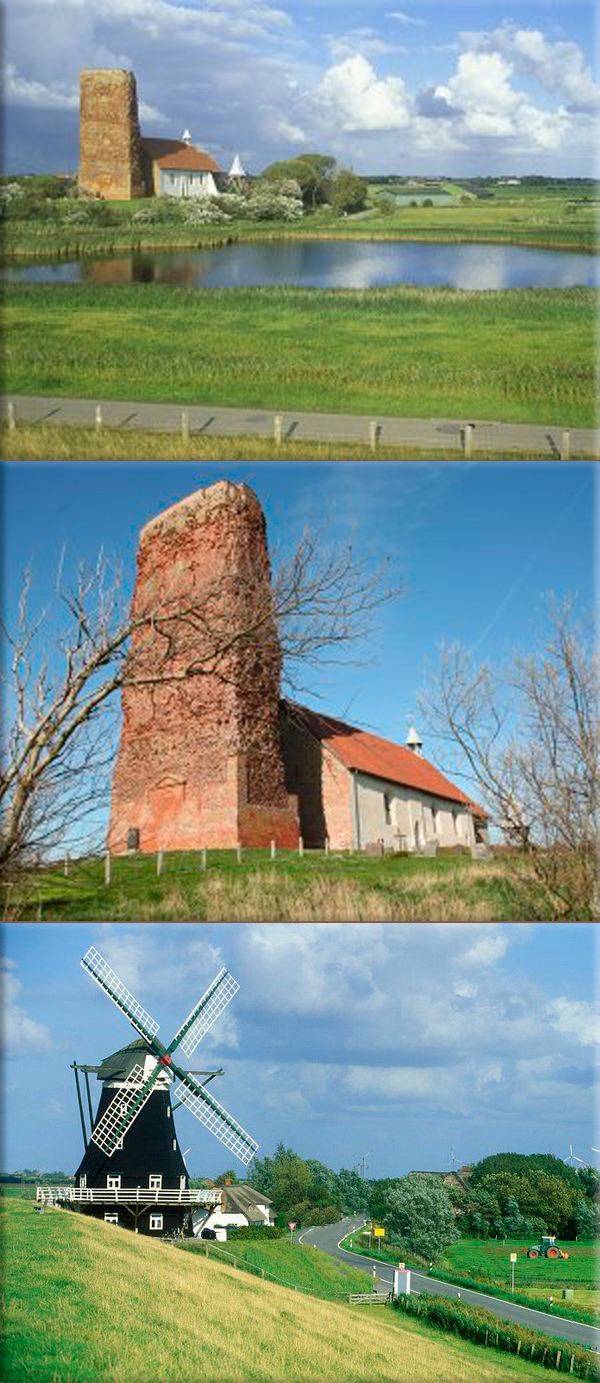
A storm surge in the North Sea destroys the German city of Rungholt on the island of Strand.
Wikipedia Image: Rungholt was a wealthy city in Nordfriesland, northern Germany. It sank beneath the waves when a storm tide (the first "Grote Mandrenke") in the North Sea tore through the area on January 16, 1362.
January 16th, 1412
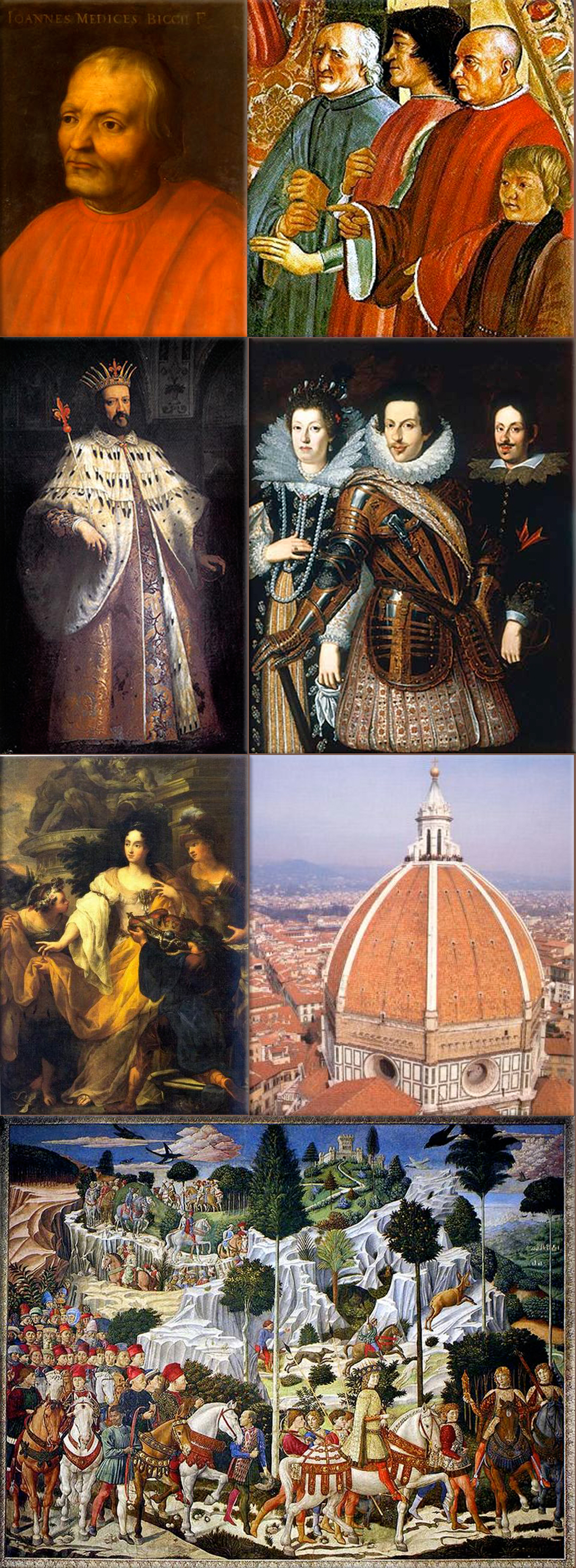
The Medici family is appointed official banker of the Papacy.
Wikipedia Image: The House of Medici; Giovanni di Bicci de' Medici, founder of the Medici bank; The Confirmation of the Rule by Domenico Ghirlandaio; Cosimo I the Great, founder of the Grand Duchy of Tuscany; The Grand Duchess Maria Maddalena, The Grand Duke Cosimo II, and their elder son, the future Ferdinando II; Anna Maria Luisa de' Medici, the last of the Grand Ducal line, in Minerva, Merkur und Plutus huldigen der Kurfürstin Anna Maria Luisa de’ Medici (English: Minerva, Mercury and Pluto pay homage to the Electress Anna Maria Luisa de' Medici) after Antonio Bellucci, 1706; The Dome of Florence Cathedral by Brunelleschi; Biblical Magi Medici family members placed allegorically in the entourage of a king from the Three Wise Men in the Tuscan countryside in a Benozzo Gozzoli fresco, 1459.
January 16th, 1547
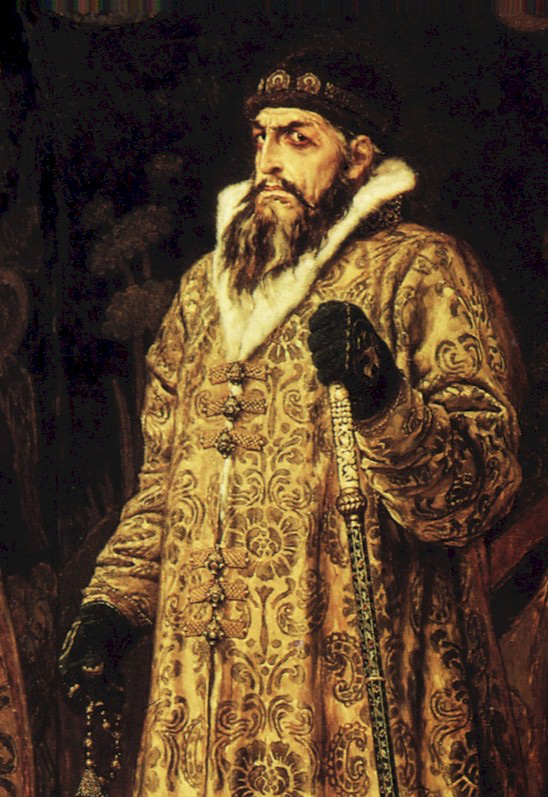
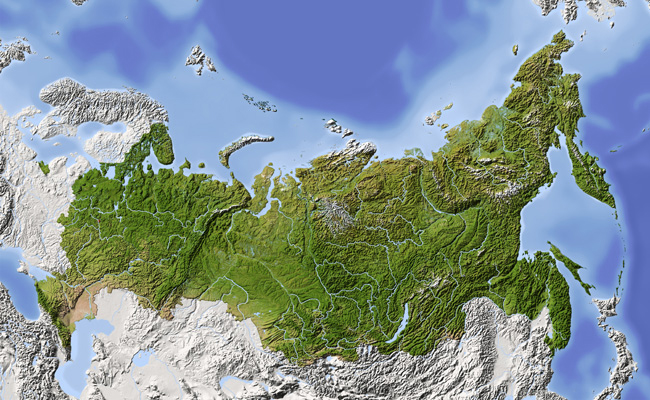
Ivan the Terrible (Ivan IV of Russia) becomes Czar of Russia.
Wikipedia Photo: Ivan the Terrible, Grand Prince of Moscow from 1533 until his death;
Russia Satellite Map.
January 16th, 1572
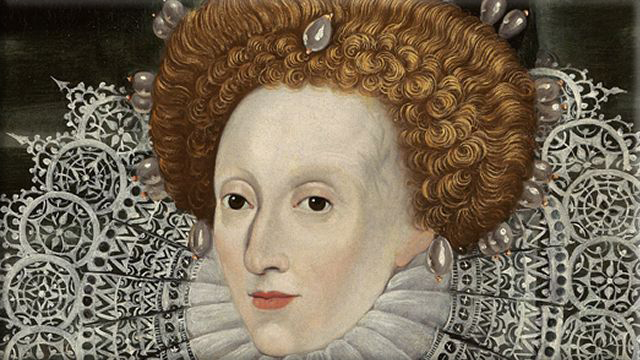
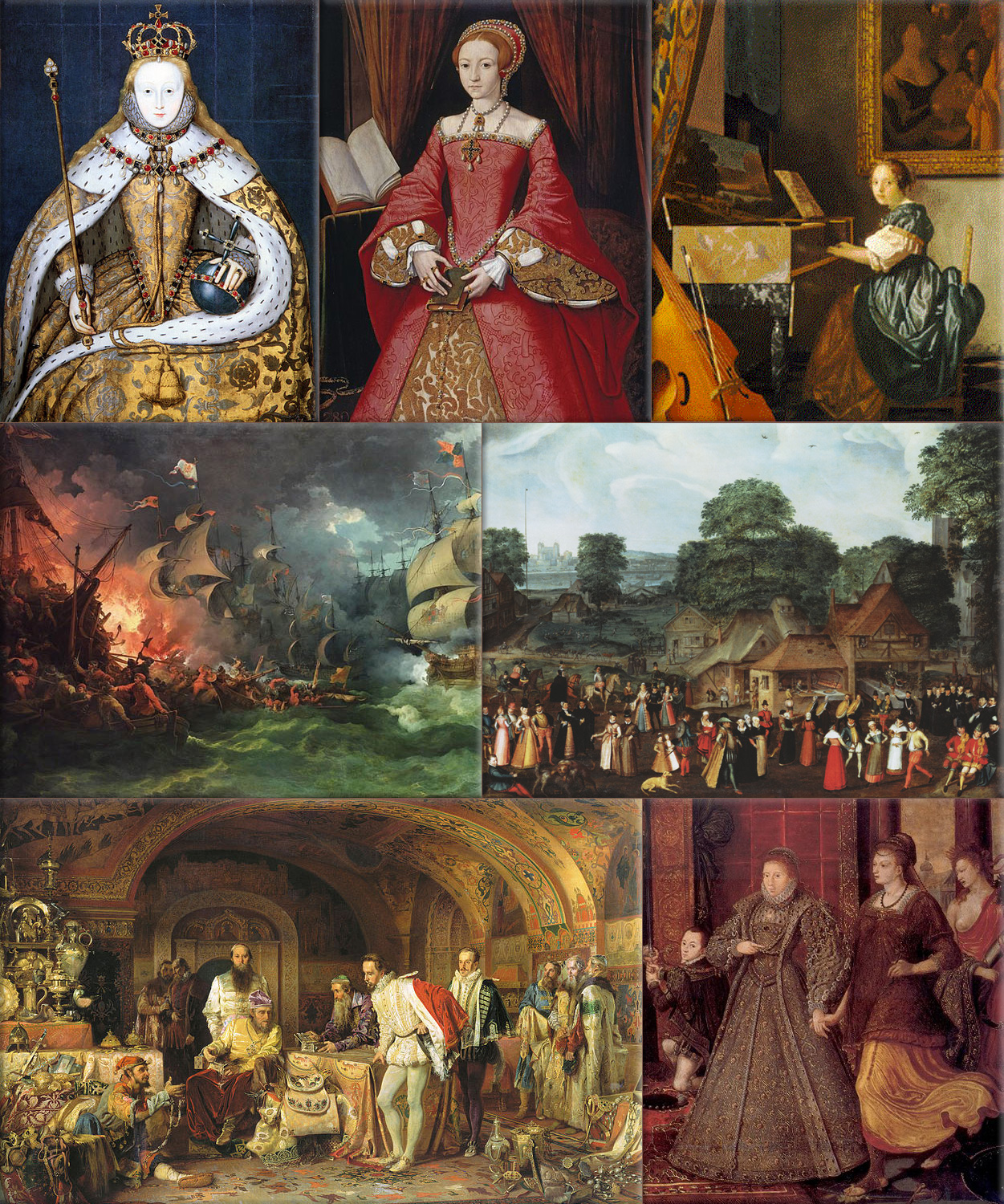
Elizabethan era (1558–1603):
1572 - Thomas Howard, 4th Duke of Norfolk is tried for treason for his part in the Ridolfi plot to restore Catholicism in England.
1581 - The English Parliament outlaws Roman Catholicism.
Wikipedia Painting: Elizabeth I of England's reign (1558 -1603) coincided with the beginning of the British Empire, known as the Golden Age.
Elizabeth I in her coronation robes, patterned with Tudor roses and trimmed with ermine; The Lady Elizabeth in about 1546; Elizabeth playing the virginals; Elizabeth and Philip, King of Spain, relations deteriorated ending in the defeat of the Spanish Armada; A wedding feast, 1569; Ivan the Terrible shows his treasures to Elizabeth's ambassador, by Alexander Litovchenko, 1875; Elizabeth ushers in Peace and Plenty. Detail from The Family of Henry VIII: An Allegory of the Tudor Succession, 1572, attributed to Lucas de Heere.
January 16th, 1605

The first edition of El ingenioso hidalgo Don Quijote de la Mancha (Book One of Don Quixote) by Miguel de Cervantes is published in Madrid, Spain.
Wikipedia Image: Don Quijote, credit Ian David Blüm, Flickr; Don Quixote by Kevin Middleton.
January 16th, 1707

The Scottish Parliament ratifies the Act of Union, paving the way for the creation of Great Britain.
Wikipedia Photo: Satellite image of Great Britain and Northern Ireland, credit NASA / GSFC.
January 16th, 1780
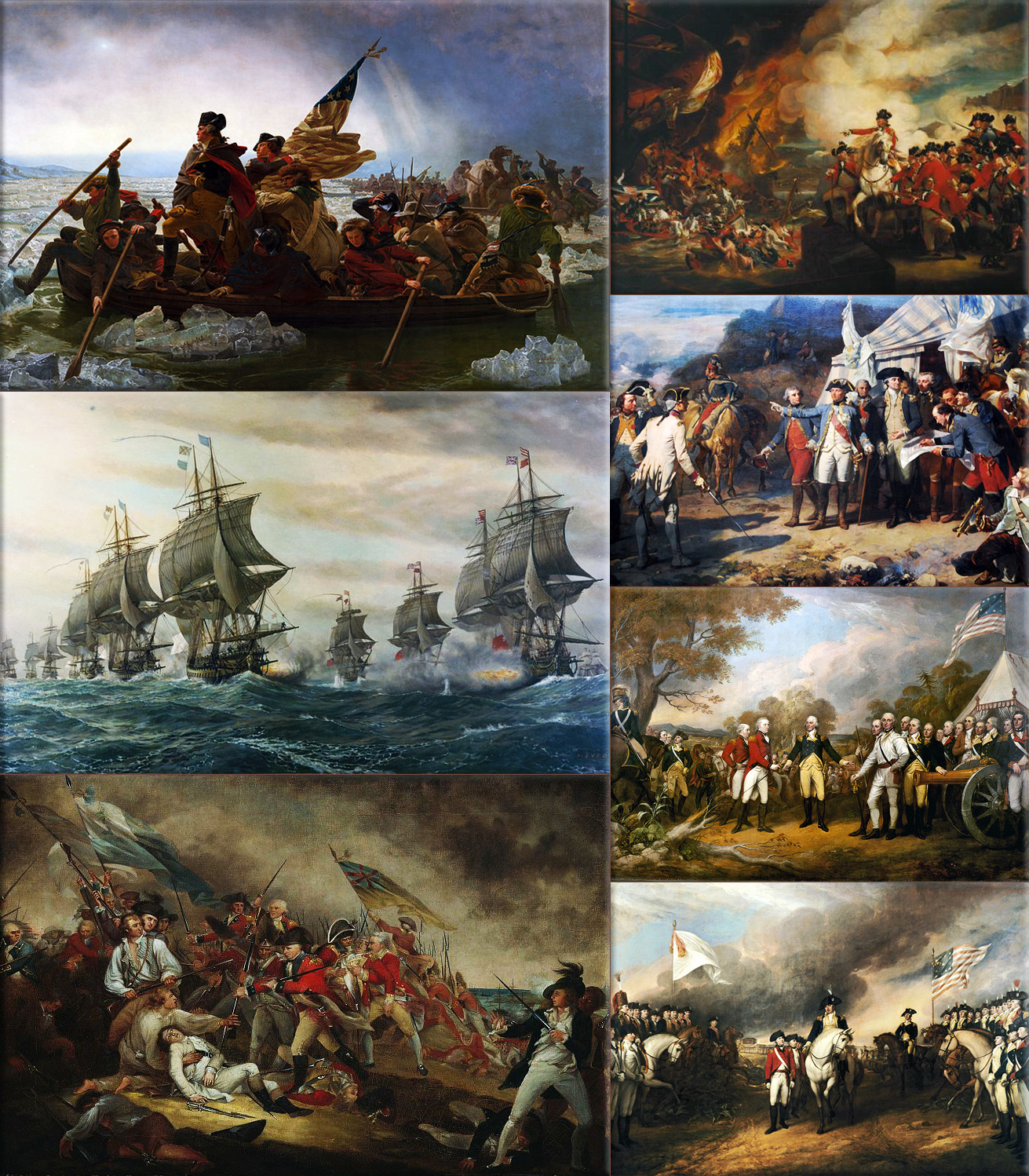
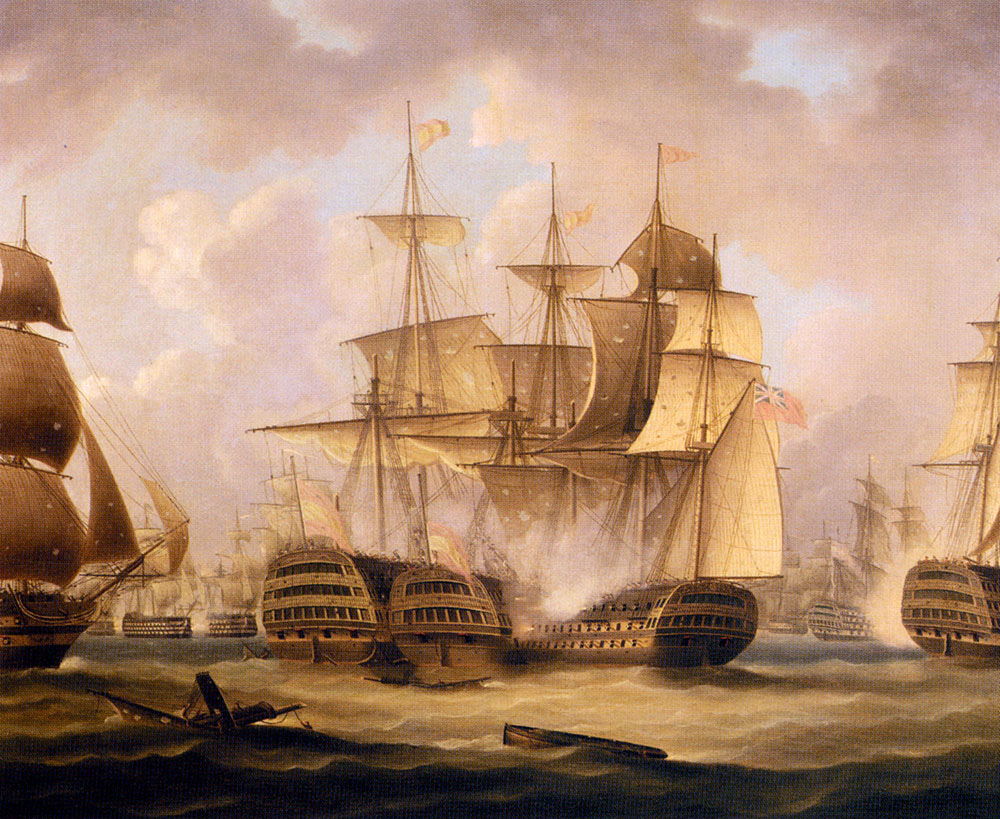
American Revolutionary War:
1780 - The Battle of Cape Saint Vincent.
1786 - Virginia enacted the Statute for Religious Freedom authored by Thomas Jefferson.
Wikipedia Paintings: Washington Crossing the Delaware, by Emanuel Leutz; Battle of the Chesapeake, French (left) and British (right) lines; Battle of Bunker Hill, The Death of General Warren at the Battle of Bunker Hill by John Trumbull; The Defeat of the Floating Batteries at Gibraltar, September 13, 1782, by John Singleton Copley; Washington and the Comte de Rochambeau at Yorktown, 1781; "The surrender at Saratoga" shows General Daniel Morgan in front of a French de Vallière 4-pounder; Surrender of Cornwallis at Yorktown by (John Trumbull, 1797).
Painting: Battle of Cape Saint Vincent, by Thomas Buttersworth (1768-1842).
January 16th, 1809

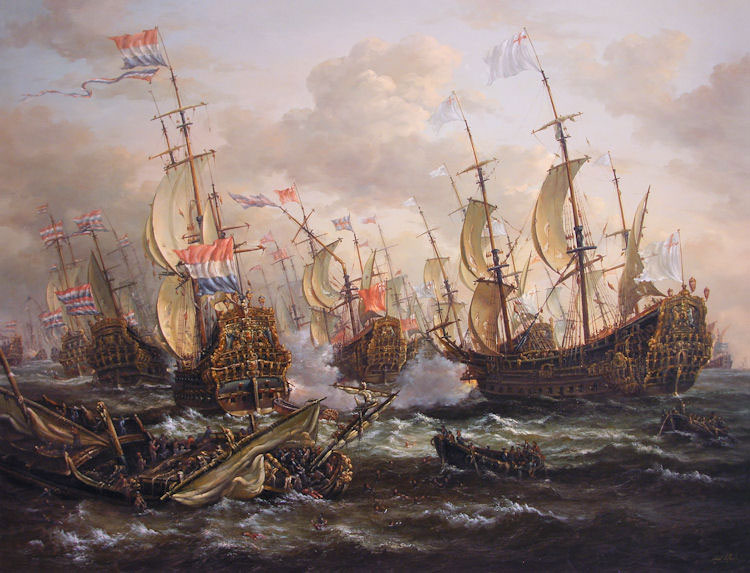
French Revolutionary Wars / Napoleonic Wars:
1809 - Peninsular War; Battle of La Coruña - The British defeat the French.
Wikipedia Painting: Battle of Trafalgar: The British HMS Sandwich fires to the French flagship Bucentaure (completely dismasted) in the battle of Trafalgar;
Napoleon in Berlin (Meynier). After defeating Prussian forces at Jena, the French Army entered Berlin on 27 October 1806;
Battle of the Bridge of Arcole Napoleon Bonaparte leading his troops over the bridge of Arcole, by Horace Vernet;
Napoleon as King of Italy (Appiani);
Napoleon Crossing the Alps (David). In 1800 Bonaparte took the French Army across the Alps, eventually defeating the Austrians at Marengo;
Charge of the Russian Imperial Guard cavalry against French cuirassiers at the Battle of Friedland, 14 June 1807;
Battle of Borodino as depicted by Louis Lejeune. The battle was the largest and bloodiest single-day action of the Napoleonic Wars;
Napoleon's withdrawal from Russia, a painting by Adolph Northen;
Wellington at Waterloo by Robert Alexander Hillingford;
Napoleon is often represented in his green colonel uniform of the Chasseur à Cheval, with a large bicorne and a hand-in-waistcoat gesture.
Battle of the Nile (Battle of Aboukir Bay).
January 16th, 1878
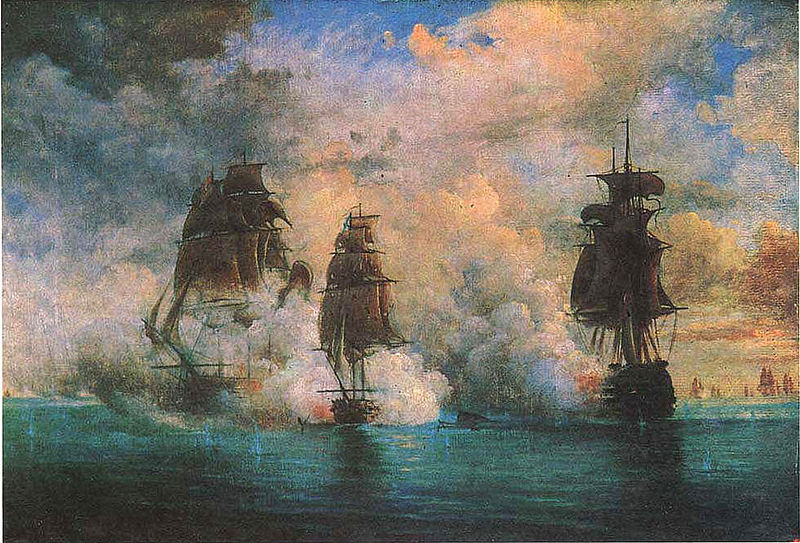
Russo-Turkish War: Battle of Philippopolis; Captain Aleksandr Burago with a squadron of Russian Imperial army dragoons liberates Plovdiv from Ottoman rule.
Wikipedia Painting: Russo-Turkish War; Action of May 26, 1829, by Nikolay Krasovsky
January 16th, 1900
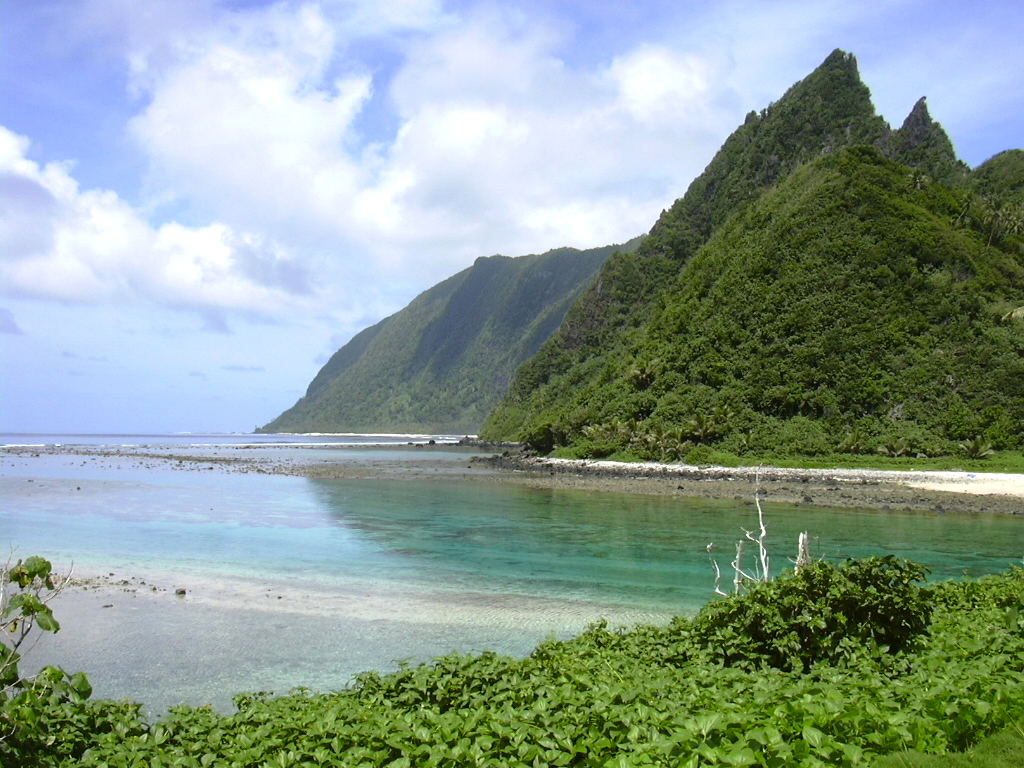
The United States Senate accepts the Anglo-German treaty of 1899 in which the United Kingdom renounces its claims to the Samoan islands.
Wikipedia Photo: Coastline of American Samoa.
January 16th, 1909
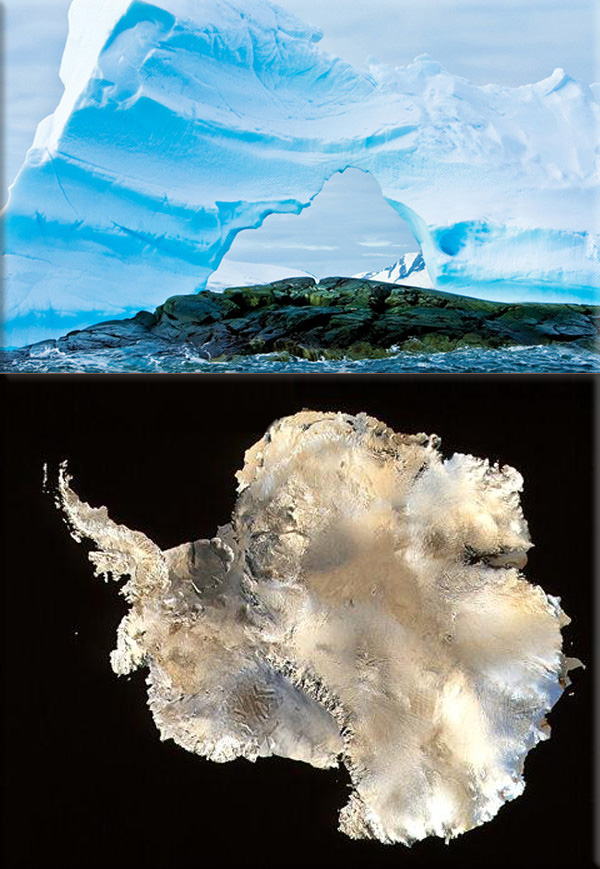
Antarctica:
1909 - Ernest Shackleton's expedition finds the magnetic South Pole.
Wikipedia Photo: Antarctica (8/30/2012), credit National Geographic; Infrared satellite image of Antarctica, credit © Visual Photos.
January 16th, 1919

Temperance movement The United States ratifies the Eighteenth Amendment to the United States Constitution, authorizing Prohibition in the United States one year after ratification.
Wikipedia Photo: Volstead Act paves the way for Prohibition the following January, and ends on December 5th 1933 with the retification of the Twenty-first Amendment to the United States Constitution.
January 16th, 1920
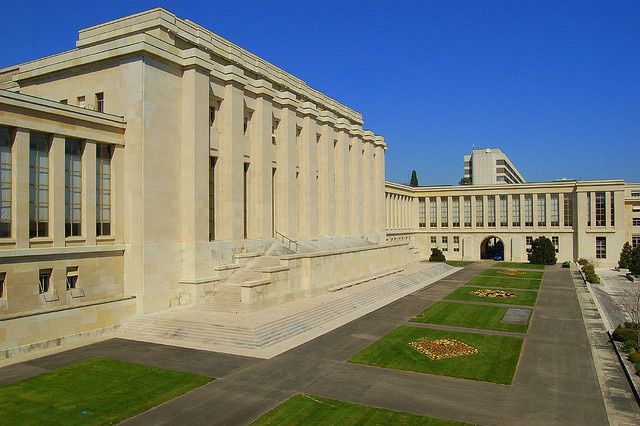
The League of Nations holds its first council meeting in Paris, France
Wikipedia Photo: The Palais des Nations, building constructed for the League of Nations between 1929 and 1938, is the United Nations european headquarters in Genève.
January 16th, 1939
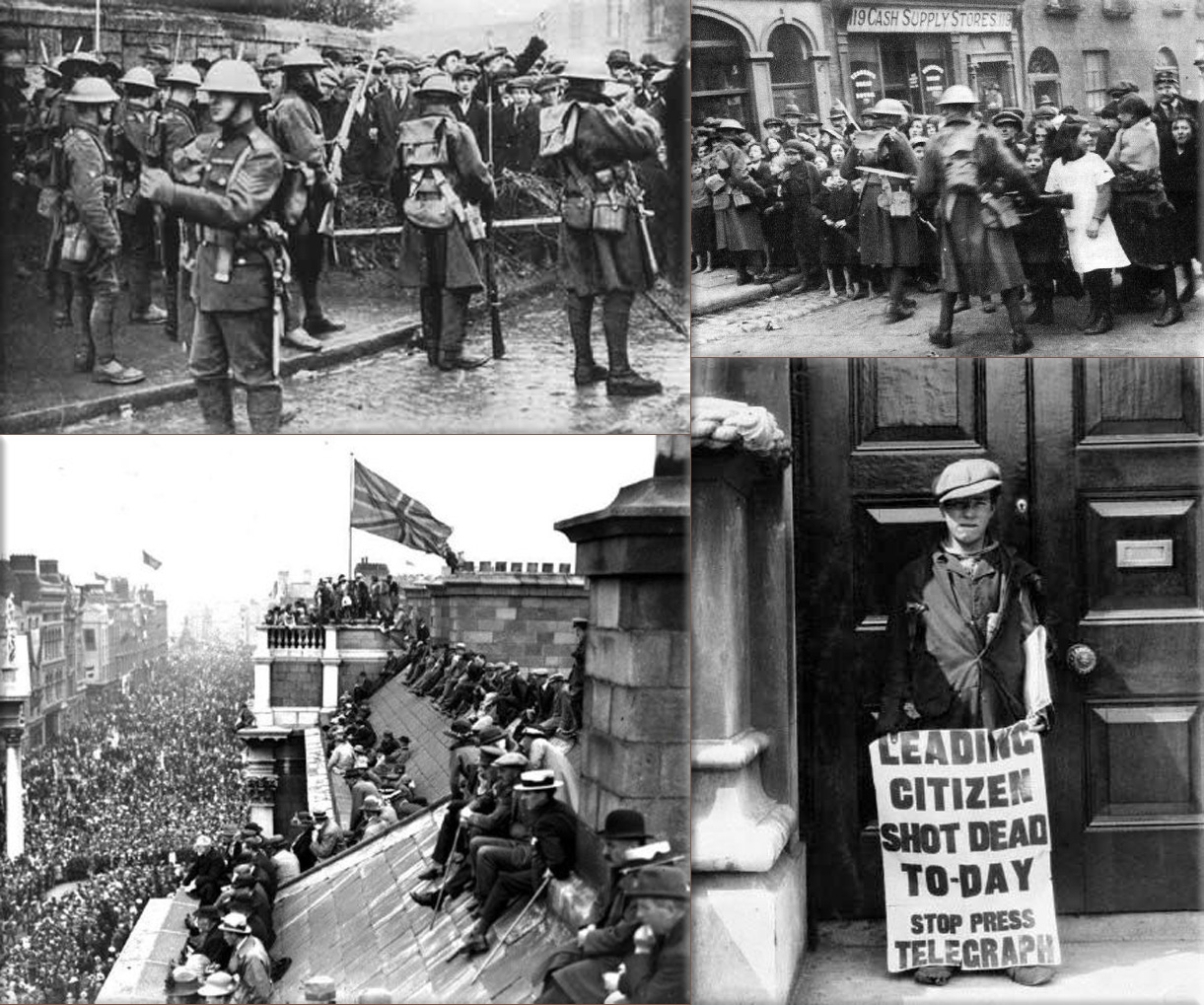
Irish War of Independence:
1939 - The Irish Republican Army begins a bombing and sabotage campaign in England.
Wikipedia Photo: British troops in Dublin City 1920's during the Irish War of Independence; Not everyone was a separatist in Ireland in 1919. Here the Union Jack flies over Trinity College at the Victory Parade for the First World War in Dublin; It believe the story behind the headlinesin the photo was with the shooting by members of Michael Collins squad of a high-ranking official of the G. N. R. (The Great Northern Railway) on the Southside of Dublin.
January 16th, 1945
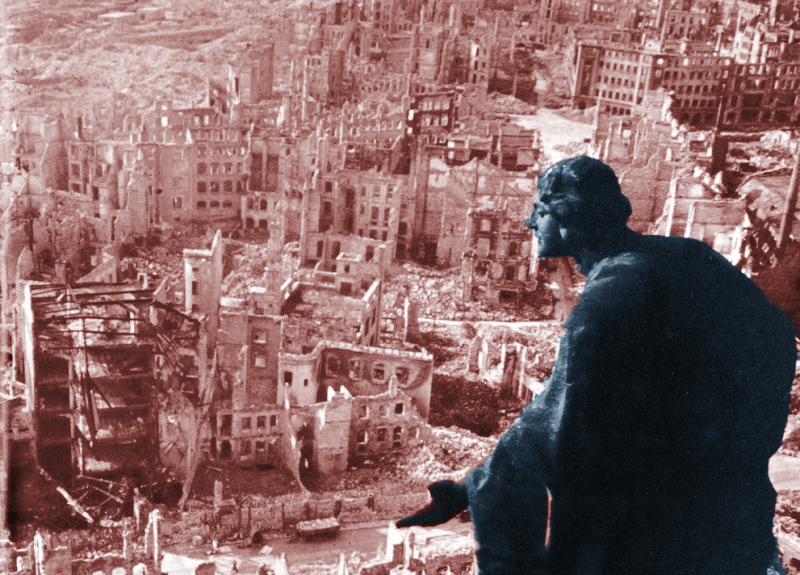

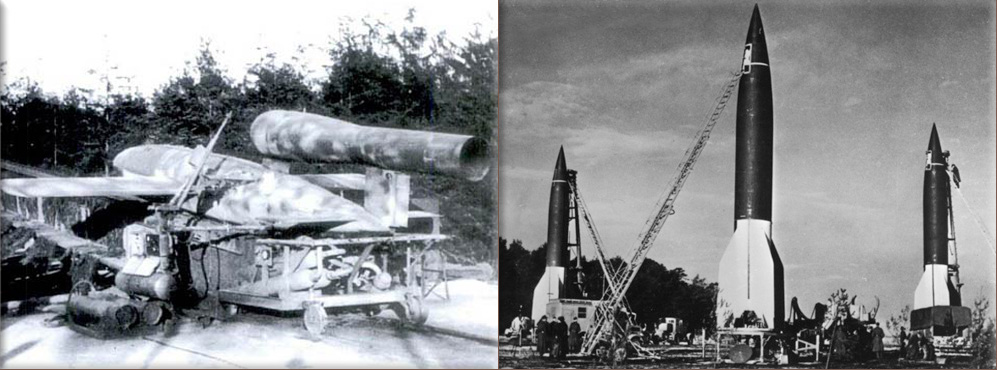
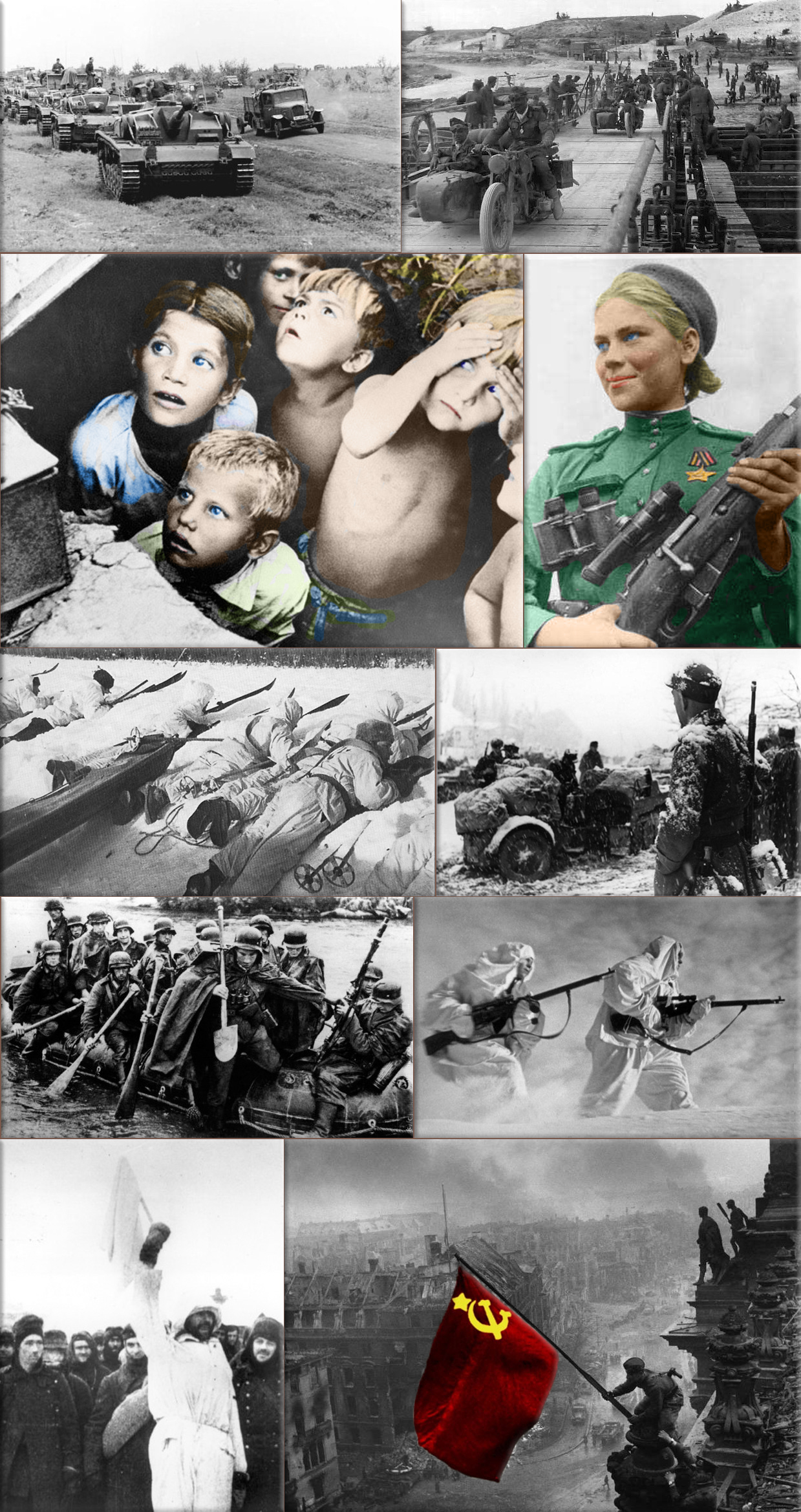
World War II:
1945 - Adolf Hitler moves into his underground bunker, the so-called Führerbunker.
Wikipedia Photo: Bombing of Dresden in World War II; August Schreitmüller's sculpture 'Goodness' surveys Dresden after a firestorm started by Allied bombers in 1945.
USS Bunker Hill was hit by kamikazes piloted by Ensign Kiyoshi Ogawa and another airman on 11 May 1945. 389 personnel were killed or missing from a crew of 2,600; Ensign Kiyoshi Ogawa, who flew his aircraft into the USS Bunker Hill during a Kamikaze mission on 11 May 1945; Kamikaze Missions - Lt Yoshinori Yamaguchi's Yokosuka D4Y3 (Type 33 Suisei) "Judy" in a suicide dive against USS Essex. The dive brakes are extended and the non-self-sealing port wing tank is trailing fuel vapor and/or smoke 25 November 1944.
German V1 flying-bomb and V2 Rockets - Preparations for a Salvo Launch of V-2 Rockets in the Heidelager near Blizna (Poland) (1944), credit German History in Documents and Images GHDI.
Eastern Front (World War II); Germans race towards Stalingrad. August 1942; Soviet children during a German air raid in the first days of the war, June 1941, by RIA Novosti archive; Soviet sniper Roza Shanina in 1944. About 400,000 Soviet women served in front-line duty units Caucasus Mountains, winter 1942/43; Finnish ski patrol: the invisible enemy of the Soviet Army with an unlimited supply of skis; Men of the German Engineers Corps cross a river which is swollen after the first autumn rains, to strengthen bridges linking the German positions on the central front in Russia. by Keystone / Getty Images. October 1942; Russian snipers fighting on the Leningrad front during a blizzard. Photo by Hulton Archive / Getty Images, 1943; German soldiers surrendering to the Russians in Stalingrad, the soldier holding the white flag of surrender is dressed in white so that there could be no doubt of his intentions, a Russian soldier is on the right of the photograph. by Keystone / Getty Images, January 1943.
January 16th, 1956


President Gamal Abdel Nasser of Egypt vows to reconquer Palestine.
Wikipedia Photo: Potsdam Conference; Clement Attlee, Harry Truman and Joseph Stalin at the Potsdam Conference, July 1945. (The Potsdam Conference: held at Cecilienhof, the home of Crown Prince Wilhelm Hohenzollern, in Potsdam, occupied Germany, from July 17 to August 2, 1945)
Civil War in Mandatory Palestine; Arab volunteers fighting in Palestine in 1947; Jewish soldiers at Katamon, Jerusalem; Jerusalem convoy, 1948.
January 16th, 1969
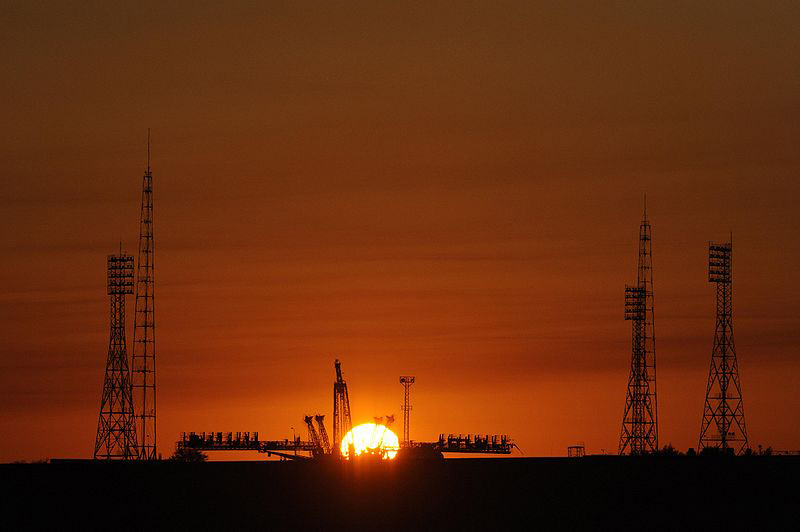
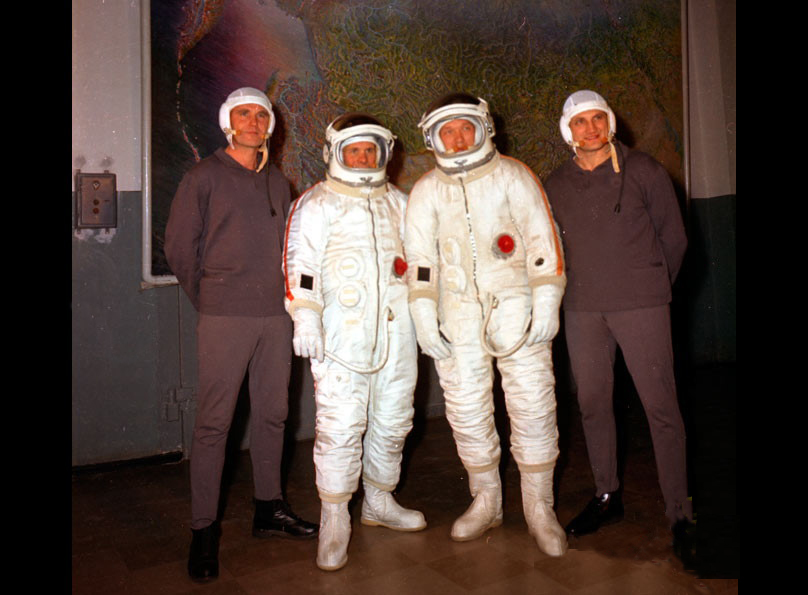
Soviet spacecraft Soyuz 4 and Soyuz 5 perform the first-ever docking of manned spacecraft in orbit, the first-ever transfer of crew from one space vehicle to another, and the only time such a transfer was accomplished with a space walk.
Wikipedia Photo: Baikonur Cosmodrome's "Gagarin's Start" Soyuz launch pad prior to the rollout of Soyuz TMA-13, October 10, 2008.
Crew Soyuz 4 and 5, credit spacefacts.de
January 16th, 1991
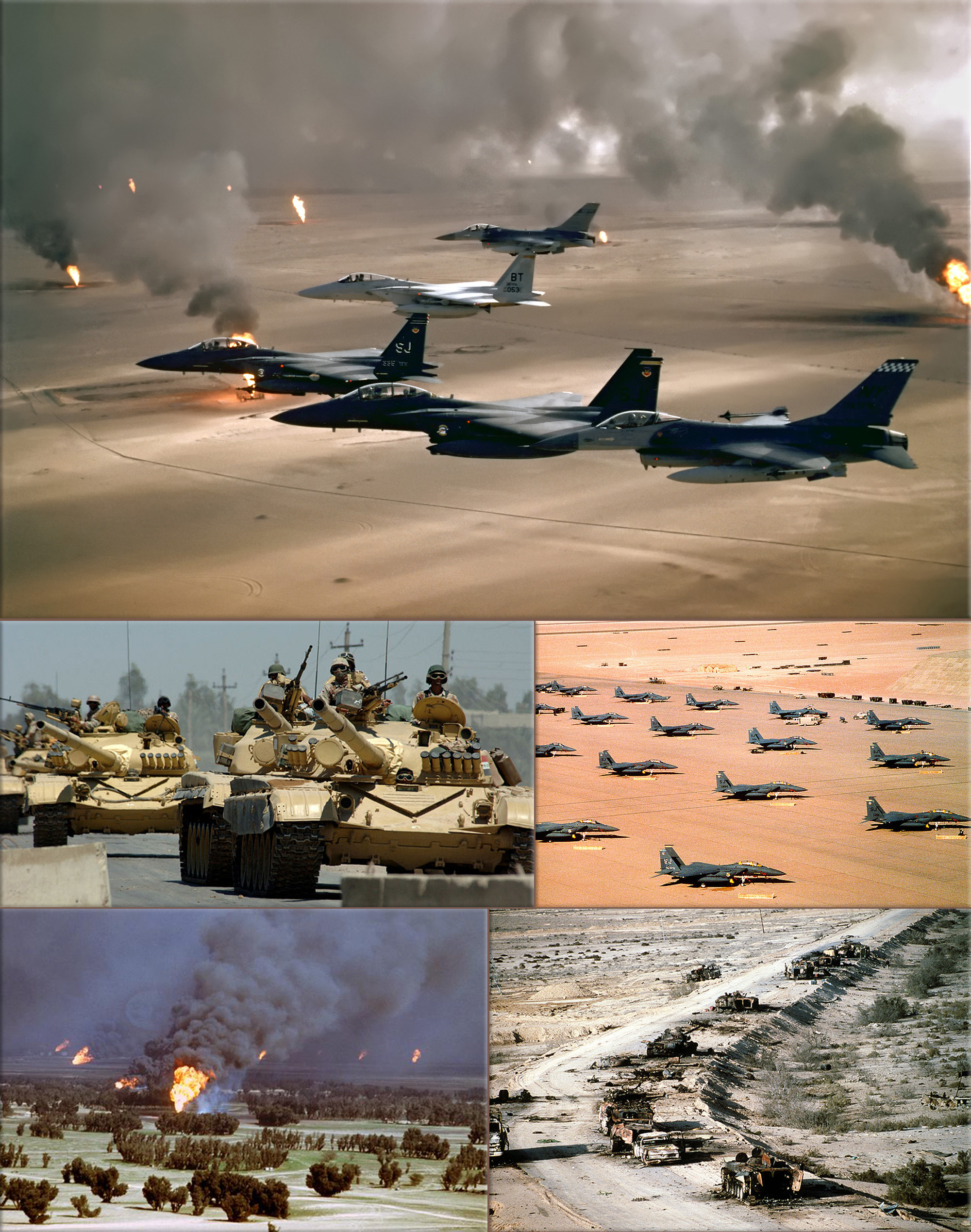
Gulf War - Iraq War:
1991 - The Coalition Forces go to war with Iraq, beginning the Gulf War.
Wikipedia Photo: USAF F-15Es, F-16s, and a USAF F-15 flying over burning Kuwaiti oil wells; Iraqi Army T-72 main battle tanks. The T-72 tank was a common Iraqi battle tank used in the Gulf War; F-15Es parked during Operation Desert Shield; The oil fires caused were a result of the scorched earth policy of Iraqi military forces retreating from Kuwait; Aerial view of destroyed Iraqi T-72 tank, BMP-1 and Type 63 armored personnel carriers and trucks on Highway 8 in March 1991.
January 16th, 2002
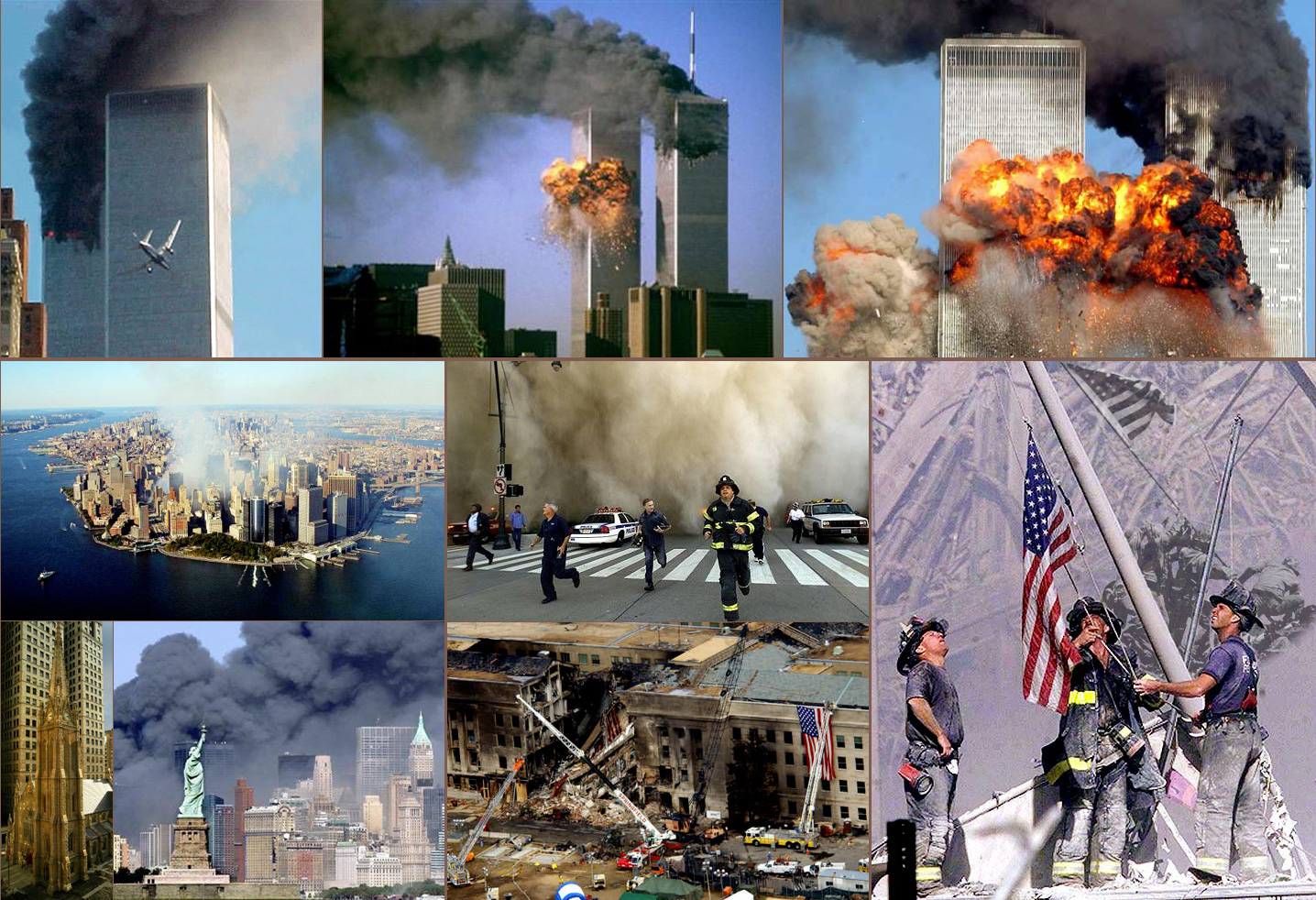
The United Nations Security Council unanimously establishes an arms embargo and the freezing of assets of Osama bin Laden and al-Qaeda, and the remaining members of the Taliban.
Wikipedia Photo: September 11 Attacks: From top to bottom: the World Trade Center burning; Trinity Cathedral; Statue of Liberty; a section of the Pentagon collapses; 9/11 memorial service.
January 16th, 2003
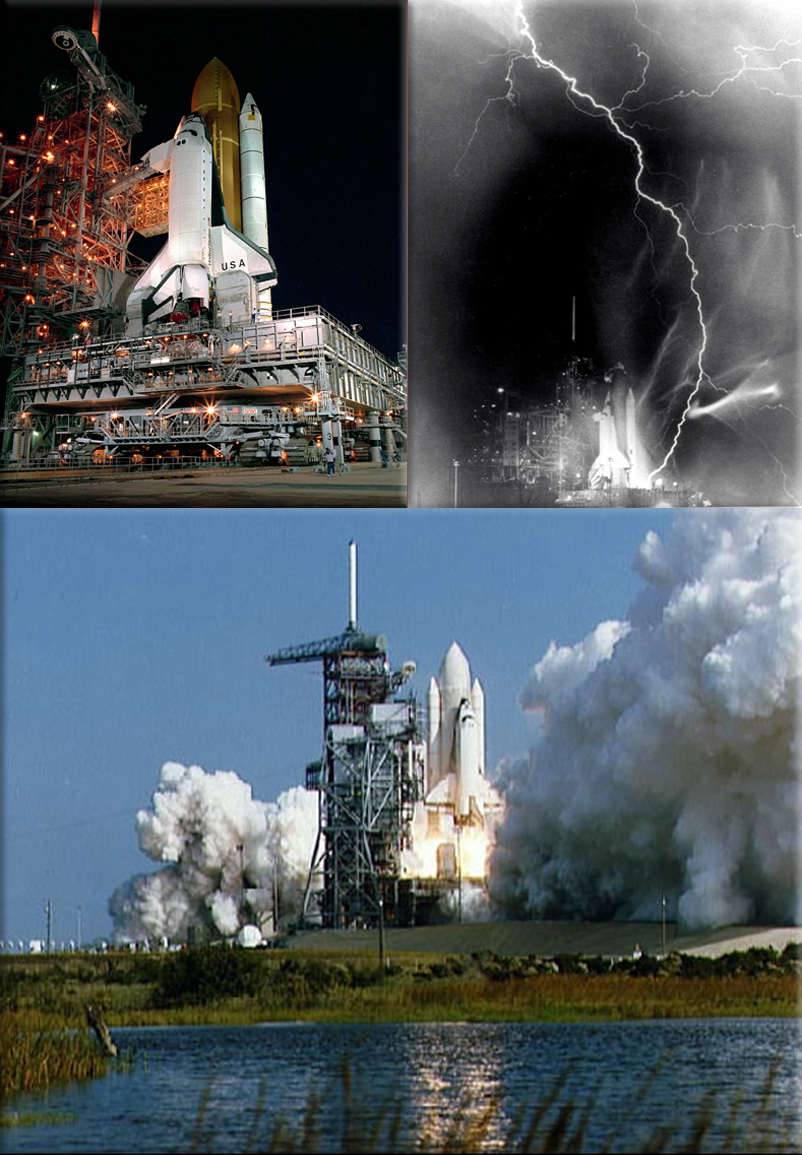
Space Shuttle program, STS-107 Mission: Space Shuttle Columbia takes off which would be its final one. Columbia disintegrated 16 days later on re-entry.
Wikipedia Photo: NASA - Space Shuttle Columbia
January 16th, 2016
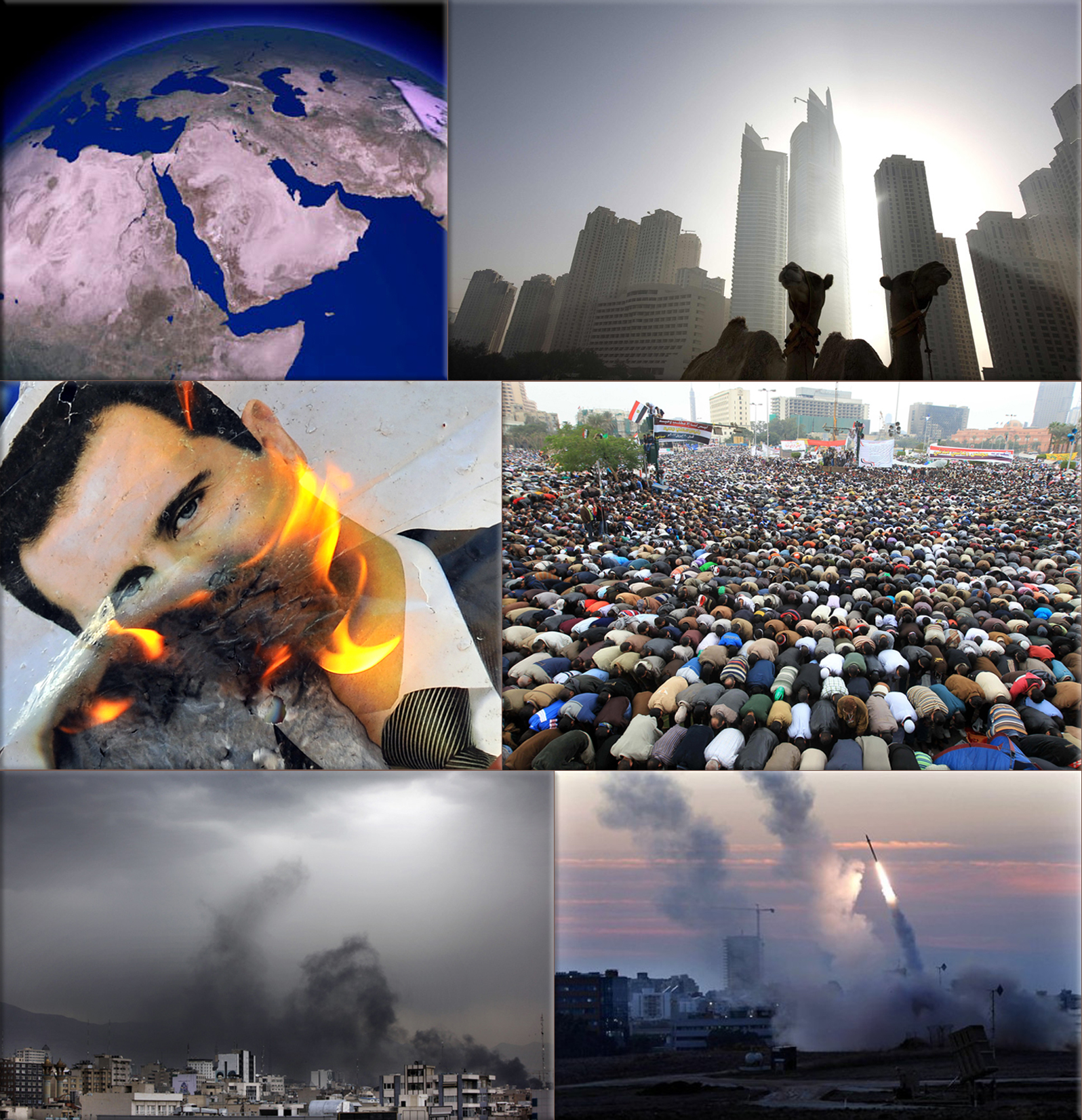
Modern conflicts in the Middle East, social unrest and terrorist attacks:
2016 - Ouagadougou attacks; The 33 out of 126 freed hostages are injured and 23 killed in terrorist attacks in Ouagadougou, Burkina Faso on a hotel and a nearby restaurant.
Wikipedia Photo: Middle East satellite image, NASA. ● Camels are seen early morning on a beach in the Marina area of Dubai October 16, 2008. (Steve Crisp, Reuters) ● A portrait of Syrian President Bashar al-Assad burns during clashes between rebels and Syrian troops in Selehattin, near Aleppo, on July 23, 2012. (Bulent Kilic, AFP / GettyImages) ● Egyptians gather in their thousands in Tahrir Square to mark the one year anniversary of the revolution on Jan. 25, 2012 in Cairo Egypt. Tens of thousands have gathered in the square on the first anniversary of the Arab uprising which toppled President Hosni Mubarak. (Jeff J Mitchell, Getty Images) ● Black smoke rises above the Tehran skyline as supporters of Mir Hossein Mousavi burn tires and other material in the streets as they fight running battles with police to protest the declared results of the Iranian presidential election in Tehran, Iran, Saturday, June 13, 2009. (Ben Curtis, AP) ● The Iron Dome defense system fires to interecpt incoming missiles from Gaza in the port town of Ashdod, Thursday, Nov. 15, 2012. (Tsafrir Abayov, AP)
